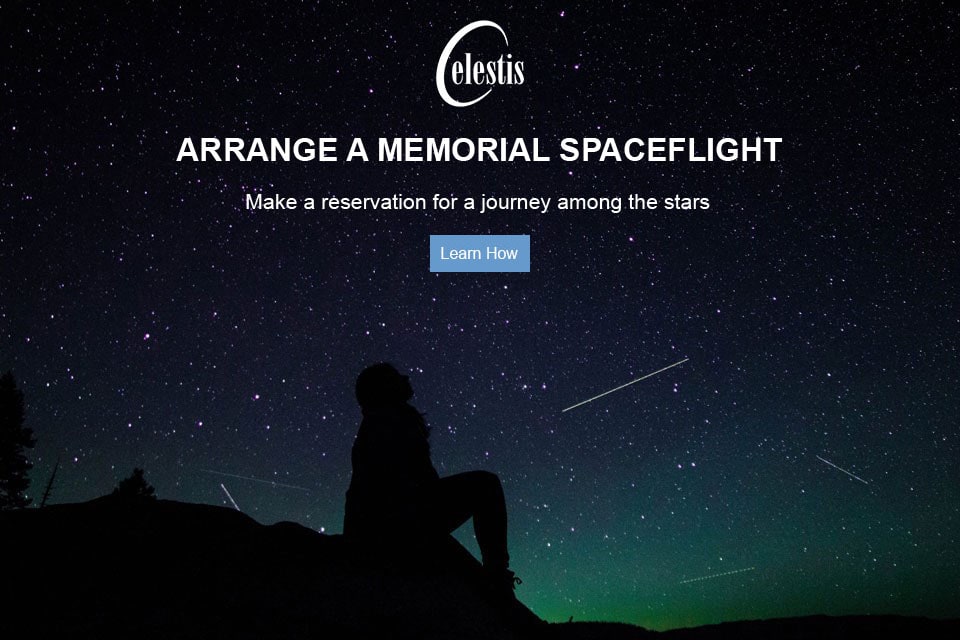My Friend Phil

by Emily Carney
I must go down to the seas again, to the vagrant gypsy life,
To the gull’s way and the whale’s way where the wind’s like a whetted knife;
And all I ask is a merry yarn from a laughing fellow-rover,
And quiet sleep and a sweet dream when the long trick’s over. - John Masefield, “Sea-Fever”
During my career as a space historian and podcaster, I’ve read countless biographies and autobiographies about spaceflight pioneers – flight controllers, engineers, scientists, workers, and, of course, astronauts. I’ve had the unique honor of being able to interview many personalities who I read about incessantly as a space-obsessed child. One of those personalities – whose name I first saw in a book that has become dog-eared and fragile over time, Jane’s Spaceflight Directory 1986 – was Dr. Philip K. Chapman, member of 1967’s class of astronaut-scientists, and the first Australian-born person to become an astronaut.
My interest in Chapman was reignited by a great book by space historian Colin Burgess called Shattered Dreams, which catalogs reminiscences from those who nearly made it to space, but didn’t for a variety of reasons. Chapman’s life during his NASA years had been well-documented, but I wanted to know more about what he had accomplished outside of the space agency’s doors. While Burgess’ book admirably summarizes Chapman’s life from space-obsessed Australian youth to one of the most visible representatives of the Space Age, I wanted to interview him to find answers to questions I was aching to know: what was the space community really like during the 1970s, when dreamers such as Dr. Gerard K. O’Neill prophesied a switched-on future that included settlements in space? What role did Antarctica play in his life, and career?
Another question was, did he regret not being able to go to space? This question arose because Chapman resigned his NASA post in mid-1972, very aware he would not fly until well into the 1980s.
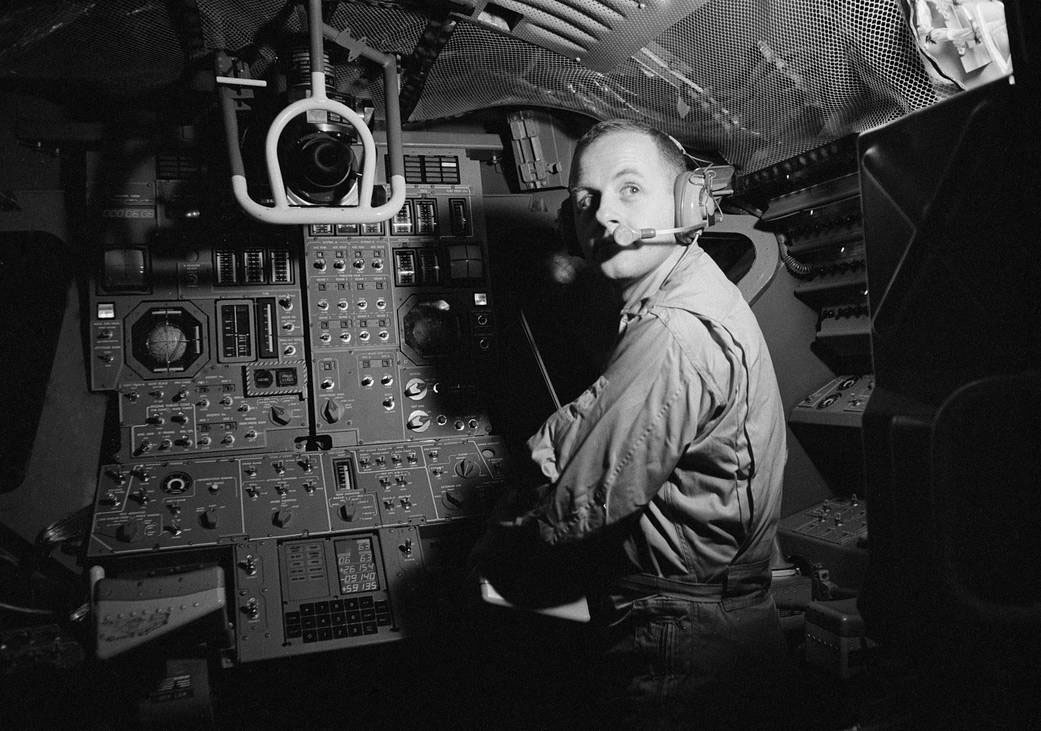
Dr. Chapman trains in the Lunar Module Simulator, Centrifuge, and the Apollo Mission Simulator at the then-Manned Spacecraft Center, now Johnson Space Center, in Houston in 1968. Image Credit: NASA
A close friend supplied an email address he’d located belonging to Chapman, and one day in June 2020, I nervously fired off an email asking if he’d like to chat. I write “nervously” because he was one of the less public Apollo-era astronauts, and did not do many public events, or autograph shows. I honestly did not expect a reply.
A day later, I did receive a reply: “Emily, if you will send me questions by email, I will be happy to answer them.” And answer them he did. From this point, he became known as Phil to me, and our interview led to a three-part series I wrote for the National Space Society chronicling his life and career before and after his NASA years. We developed a great rapport, and I found him to be sharp, outspoken, and frequently dryly funny.
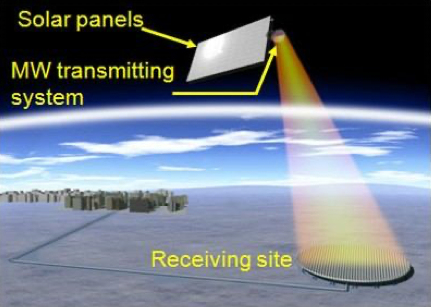
Illustration of a Solar Power Satellite system -- a research interest of Dr. Chapman -- that would collect solar energy in space and transmit the energy in the form of microwaves to a receiving site on Earth where it would be converted to electricity. Image Credit: Journal of Physics, M Maqsood and M Nauman Nasir 2013 J. Phys.: Conf. Ser. 439 012046
For example, in 1957, 22-year-old Phil left Australia for his first big adventure: 15 months in Antarctica with Australian National Antarctic Research Expeditions (ANARE) performing scientific experiments. While the United States’ Explorer I satellite was trying to deduce the origin of Northern and Southern aurorae in 1958, in previous months Phil and his crew had been trying to do the same thing from the world’s southernmost destination. However, he only got to Antarctica that time around because he was the replacement for another scientist who had broken his leg shortly before the expedition. Phil essentially was a last minute replacement, and when he received word that he was being called up to do this job, he literally had minutes to inform everyone about where he was headed. In his words:
Sputnik 1 was launched in [October 1957], which meant that the space age was really here, but I was still stuck in Sydney. One morning just before Christmas, I received a phone call in my lab at Philips from Fred Jacka, the chief scientist at ANARE in Melbourne, He said that one of their physicists for 1958 had broken his leg. Could I fill in? Damn right…The ship would sail in a week, and I would need some orientation, issue of gear, etc. – so could I possibly be in Melbourne that evening? A plane ticket would be waiting at the airport. So I gave ten minutes notice to my boss and went to see my girlfriend…to tell her I would be back in 15 months.
She was not pleased.
His then-girlfriend’s displeasure did have, as they say, a silver lining. Phil’s Antarctica experience allowed him to save up enough money to attend MIT in the United States, which was where he received his post-graduate education. It also undoubtedly impressed his interviewers at NASA in 1966.
Contact us for more information or to receive launch updates
I began to see that Phil was at the precipice of a strange time in NASA’s history, when the agency was desperately striving for a direction post-Apollo, but was also reeling from budget cuts that all but gutted his chances to fly during the 1970s. I located a memo he wrote in August 1970, two years prior to his resignation. In it, he aggressively tried to rally his fellow astronaut-scientist colleagues into making calls for action:
I would indict NASA on at least the following counts:
1) Failure to spread understanding of the importance of the program. We have relied on spectaculars and the space race, both of which are ineffective now – everything is anticlimax after Apollo 11, and the Russians are (seemingly) out of the running. What we are doing will be remembered when Vietnam and even the whole communist-capitalist struggle are as dusty as the Peloponnesian Wars, but there is little public awareness of what a remarkable thing it is to be living now.
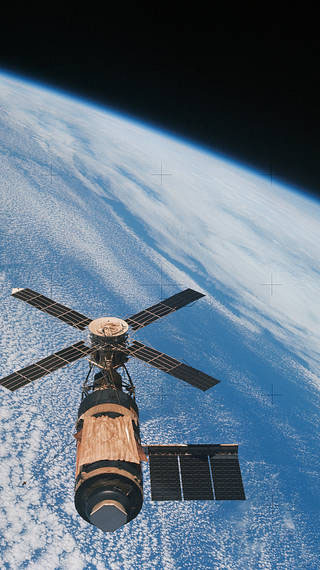 His tenacity in trying to get his colleagues and higher-ups to see “what a remarkable thing it is to be living now” sadly did not amount to much, as Skylab B – the space station for which he’d already developed experiments – was canceled in 1972. Out of a spaceship ostensibly until at least 1982, he saw the proverbial writing on the wall, and decided to move on with the rest of his life.
His tenacity in trying to get his colleagues and higher-ups to see “what a remarkable thing it is to be living now” sadly did not amount to much, as Skylab B – the space station for which he’d already developed experiments – was canceled in 1972. Out of a spaceship ostensibly until at least 1982, he saw the proverbial writing on the wall, and decided to move on with the rest of his life.
What a life it was. Phil revisited Antarctica several times, became the president of the L5 Society during the 1970s, worked to pioneer space based solar power with Dr. Peter Glaser, was chief scientist for the rocket startup Rotary Rocket Company, was chair of the Solar High Study Group, and enjoyed writing. He still had writing projects in the works and was going strong until April 5, 2021, when he suddenly passed away at age 86.
A few months after his death, I discovered that despite the fact his spaceflight dreams seemingly had ended at Johnson Space Center in 1972…they hadn’t ended at all, because I was informed Phil was making a trip on a Celestis Memorial Flight, and would have his burial in space. This makes me smile from ear to ear, because I know from talking to him, he always knew he’d find a way to space.
When a Navy sailor dies, he or she is often buried at sea. There’s a saying in the Navy that you are always returned to the place from where you came, and for us (former Navy sailor here), that’s the sea.
Phil was always a star sailor, and always knew humanity’s destiny – and his destiny – was inextricably tied to space. And now, Celestis has made it possible for him to lie to rest there. Nothing could be more appropriate. While I miss my friend Phil terribly and would love nothing more to chat with him again, I am at peace knowing he’s going where he truly belongs.
As Phil would say: “...What a remarkable thing it is to be living now.”
About the Author
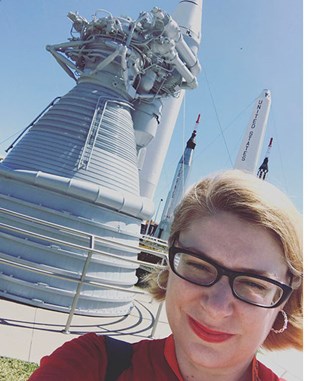 Emily Carney is a spaceflight enthusiast and author hailing from Saint Petersburg, Florida. Her first vivid space memory was seeing Columbia launch in late 1981 (STS-2). Even though she was very young (three years old) and the launch was 140 miles away from where she stood, she’ll never forget it. From then on, she was obsessed with the space shuttle, and spaceflight in general.
Emily Carney is a spaceflight enthusiast and author hailing from Saint Petersburg, Florida. Her first vivid space memory was seeing Columbia launch in late 1981 (STS-2). Even though she was very young (three years old) and the launch was 140 miles away from where she stood, she’ll never forget it. From then on, she was obsessed with the space shuttle, and spaceflight in general.
In 1997, Carney enlisted in the United States Navy, and at one point worked as a nuclear propulsion mechanical operator aboard the USS George Washington (CVN 73). When she was honorably discharged in 2003, she went back to college and earned a degree in education. She only taught for a brief time, but after she left the education field, her passion for spaceflight was reignited.
Carney worked as a freelance writer from 2008 to 2011, and during that time she started a spaceflight blog, This Space Available. She also co-hosts a weekly podcast, Space and Things, with Dave Giles.
In 2011, Carney wanted to start a Facebook group for space enthusiasts, but was struggling to find a good name. Her husband, Steve, suggested “Space Hipsters” as sort of a sarcastic placeholder, but the name stuck. The group grew more quickly than she could imagine, and at present time it totals nearly 24,000 members. Space Hipsters boasts members from all around the world, and includes space enthusiasts, writers, artists, scientists, engineers, aspiring astronauts, and even a few actual astronauts.


